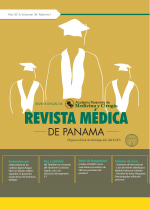Proceso de desensibilización ANTI-HLA en receptores de donante vivo HLA Clase II incompatible con anticuerpos donante específico
Autores/as
DOI:
https://doi.org/10.37980/im.journal.rmdp.20211735Palabras clave:
desensibilización, transplante renal, anticuerpos anti HLA II, recambio plasmático, anticuerpos donantes específicosResumen
Introducción: El trasplante renal es la opción terapéutica que ofrece la mejor expectativa de vida en los pacientes con enfermedad renal crónica. Muchos pacientes sensibilizados permanecen largo tiempo en lista de espera, aumentando su morbi-mortalidad en diálisis.
Objetivos: evaluar el uso de terapia de desensibilización en pacientes con anticuerpos anti HLA Clase II contra su donante vivo relacionado, identificar factores de riesgo temprano de requerimiento de biopsia renal por sospecha de rechazo y evaluar los costos relacionados.
Resultados: Realizamos valoración de terapia de desensibilización a 3 pacientes, con una disminución en los valores de anticuerpos donante específico a menos de 1000 de MFI, con un índice de RIS bajo, por lo que se procedió con el trasplante, sin complicaciones inmediatas y con un seguimiento a 18 meses sin deterioro de función renal.
Conclusiones: La desensibilización previa a trasplante renal permite disminuir el título de anticuerpos donantes específicos preformados y llevar a cabo el trasplante renal, con una buena evolución del paciente y del injerto superior a permanecer en diálisis.
Publicado
Número
Sección
Licencia
Derechos de autor 2021 Infomedic Intl.Derechos autoriales y de reproducibilidad. La Revista Médica de Panama es un ente académico, sin fines de lucro, que forma parte de la Academia Panameña de Medicina y Cirugía. Sus publicaciones son de tipo acceso gratuito de su contenido para uso individual y académico, sin restricción. Los derechos autoriales de cada artículo son retenidos por sus autores. Al Publicar en la Revista, el autor otorga Licencia permanente, exclusiva, e irrevocable a la Sociedad para la edición del manuscrito, y otorga a la empresa editorial, Infomedic International Licencia de uso de distribución, indexación y comercial exclusiva, permanente e irrevocable de su contenido y para la generación de productos y servicios derivados del mismo. En caso que el autor obtenga la licencia CC BY, el artículo y sus derivados son de libre acceso y distribución.







